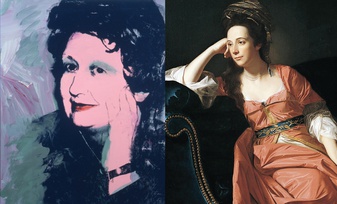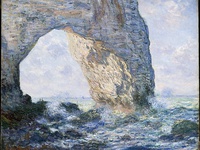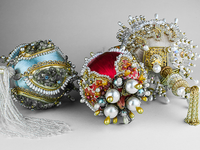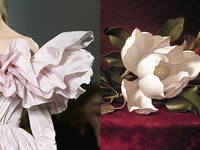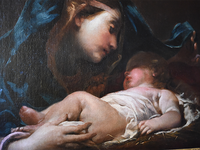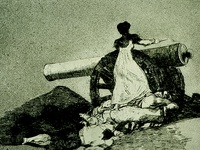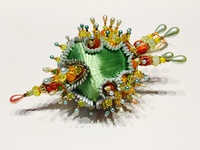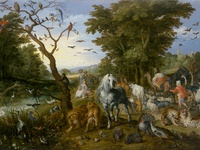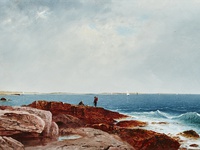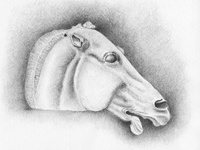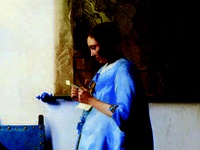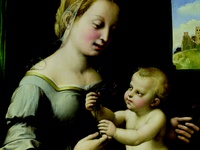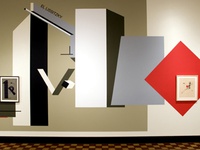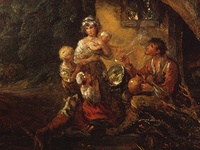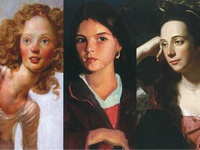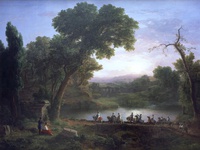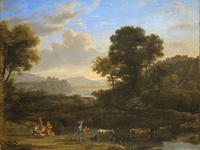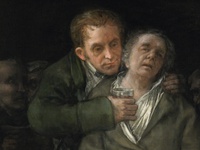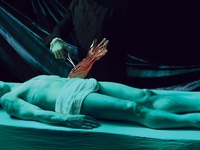UPCOMING EXHIBITIONS
 Marisol Rendón - Tapando el Sol con un Dedo (Covering the Sun with One Finger)
Marisol Rendón - Tapando el Sol con un Dedo (Covering the Sun with One Finger)
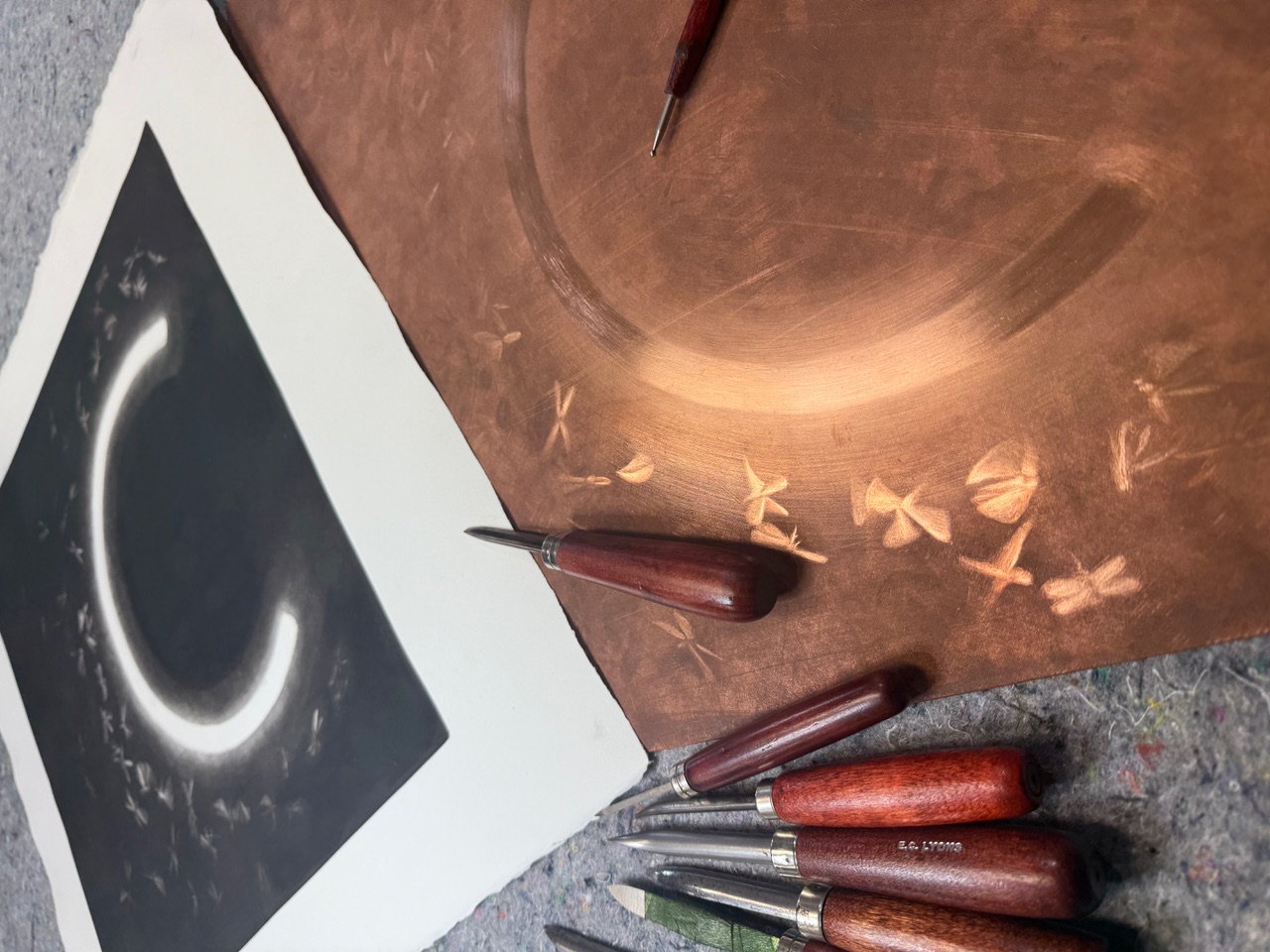
Summer Artist in Residency: June 18 - July 3, 2025
On View: July 16 - August 31, 2025
The sixth featured artist in the Timken Museum of Art’s ongoing Summer Artist-in-Residence Program is Marisol Rendón. Rendón was born in Manizales, Colombia but is well known to San Diego’s arts community through her many public artworks and service as a popular professor at Southwestern College. In 2024, she was a recipient of the San Diego Arts Prize. Her residency at the Timken was inspired by her deep admiration for the Renaissance religious imagery and by the Russian devotional icons she has studied in the galleries. Specifically, she has been inspired by these works’ integration of elaborately gilded halos and decorative backgrounds which parallel, in surprising ways, the intricate goldwork of indigenous artisans in Colombia. Rendón alludes to this universal attraction by calling her project for the Timken Tapando el Sol con un Dedo (Covering the Sun with One Finger). Visitors are invited to watch the artist create works in the museum’s Central Gallery during her residency.
✥ Read the full Press Release
✥ Attend the Curator Conversation: Monday, July 14, 2025 | 10AM
PAST EXHIBITIONS
 Reconsidering Bierstadt: Kent Monkman
Reconsidering Bierstadt: Kent Monkman
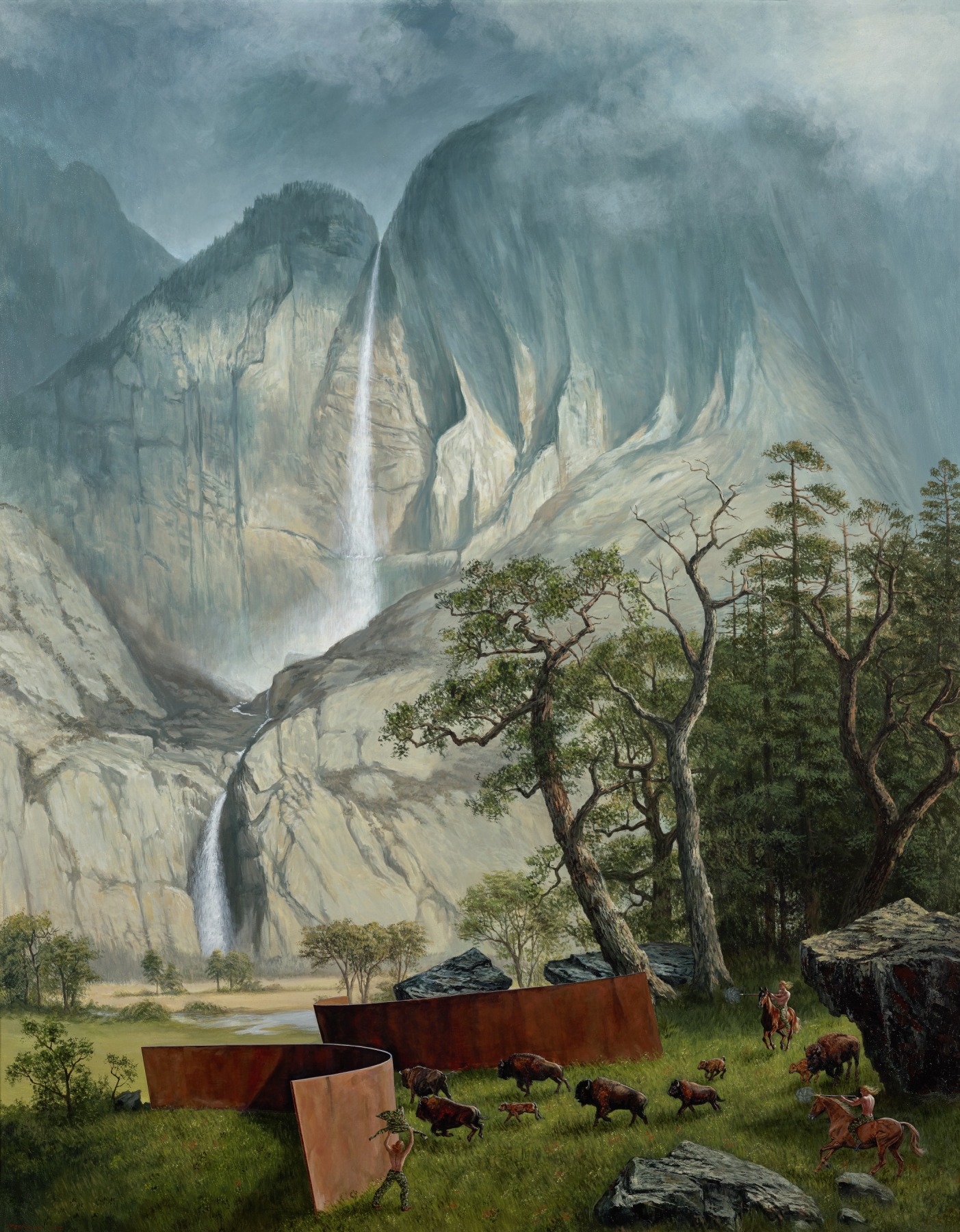
On View: March 26 - June 8, 2025
Reconsidering Bierstadt: Kent Monkman juxtaposes Albert Bierstadt's 1864 painting Cho-looke, The Yosemite Fall with contemporary First Nation Cree artist Kent Monkman's 2012 work The Fourth World, encouraging viewers to reconsider historical representations of Indigenous lands and peoples. As part of the Timken Museum's ongoing "Reconsidering..." series, Monkman’s large acrylic on canvas painting will be displayed alongside Bierstadt’s work in the American Gallery, marking the first public display of Monkman’s art in San Diego.
✥ Read the full Press Release
✥ Attend the Curator Conversation: Monday, May 12, 2025 | 10AM
 Modeling for the Masses: Sculptural Ideals in 19th-Century America
Modeling for the Masses: Sculptural Ideals in 19th-Century America
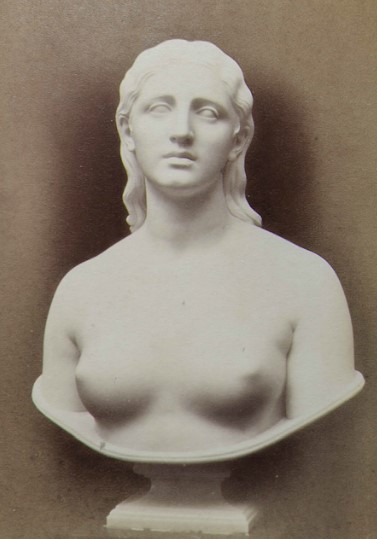
On View: October 23, 2024 - March 16, 2025
Modeling for the Masses: Sculptural Ideals in 19th-Century America explores the popularity of three-dimensional art during a time of rapid political, technological and aesthetic change. Marble works by Hiram Powers, Thomas Ball, Chauncey B. Ives, as well as plaster casts by John Rogers, found their way in homes throughout the United States. These idealized carvings carried complex messages, not least of which were connotations of cultural prestige and social privilege. This exhibition considers both the iconography of this creative practice and the mechanisms--such as advertising and photography--by which it spread to consumers.
 Kehinde Wiley, Equestrian Portrait of Prince Tommaso of Savoy-Carignan (2015)
Kehinde Wiley, Equestrian Portrait of Prince Tommaso of Savoy-Carignan (2015)
.png)
On View Through December 29, 2024
Kehinde Wiley is one of the most celebrated artists working today. The Timken is proud to share his dazzling painting Equestrian Portrait of Prince Tommaso of Savoy-Carignan (2015) for the first time with the public in San Diego. Wiley employs "street-casting" to identify youthful, contemporary models for his large-scale works, posing them in the manner of famous "Grand Manner" European portraits. In the case of Wiley's recent image from his Rumours of War series, both horse and model replicate Anthony van Dyck's Baroque portrait of Prince Tommaso Francesco of Savoy-Carignan (1634), which is today at the Galleria Saubada, Turin. While on loan to the Timken from a prominent New York collection, the painting will hang in the Dutch-Flemish Gallery, next to Anothny van Dyck's portrait of Mary Villers, Lady Herbert of Shurland which was painted about the same time as the work that served as Wiley's model.
 Tatiana Ortiz-Rubio - In Blue Time
Tatiana Ortiz-Rubio - In Blue Time
.png)
Summer Artist in Residency: June 5 - June 28, 2024
On View: July 19 - September 29, 2024
The Timken’s fifth artist-in-residence, Tatiana Ortiz-Rubio will create her monumental drawings exploring memory and the blues of atmospheric perspective in June, culminating in a site-specific installation on view July 19 – September 29.
 Boucher: Conservation in a Park
Boucher: Conservation in a Park

On View: October 19, 2023 - April 14, 2024
In partnership with the Balboa Art Conservation Center, we invite you to witness François Boucher's Lovers in a Park under full conservation, publicly examined, cleaned, and preserved with the intent to demystify modern museum practices.
 Matt Rich - P&!NTING
Matt Rich - P&!NTING
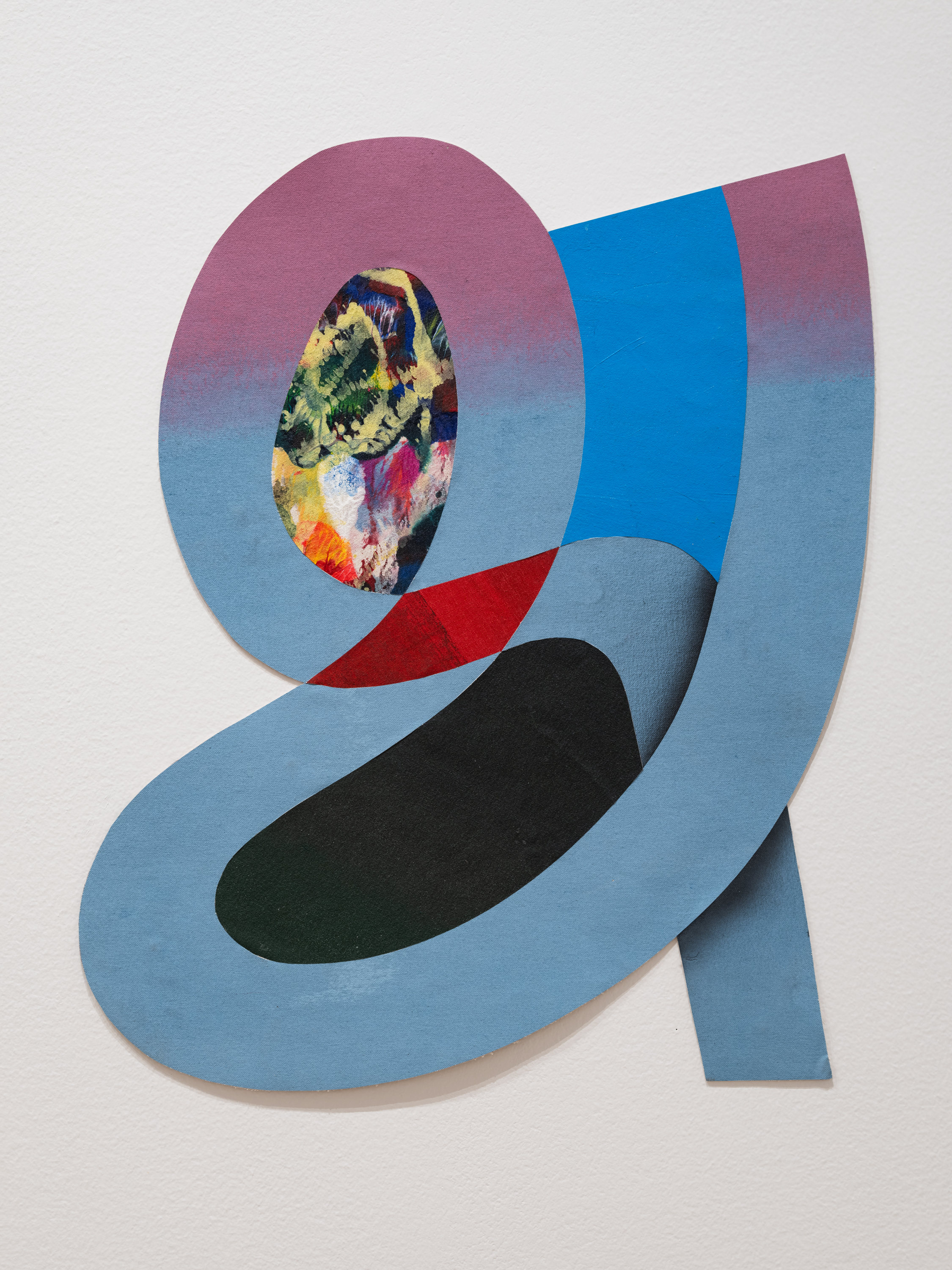
Summer Artist in Residency: June 28 - July 9, 2023
On View: July 19 - September 10, 2023
The fourth in the Timken's summer series of artists in residence will be Matt Rich. Rich is a multi-disciplinary artist. His unique, colorful, and "not quite flat" paintings have been featured in exhibitions throughout the world, including the Institute of Contemporary Art, Boston, MIT's List Visual Art Center, the Museum of Contemporary Art, San Diego, and, in collaboration with Victoria Fu, recently at the J. Paul Getty Museum. Rich will work at the museum in June, producing new artworks and being in dialogue with the public. A site-specific installation of his creations will take place in July and August. The public is invited to meet and watch this engaging artist respond to the rich environment at the Timken.
 Reconsidering Rembrandt: Night Watching, by Rineke Dijkstra
Reconsidering Rembrandt: Night Watching, by Rineke Dijkstra
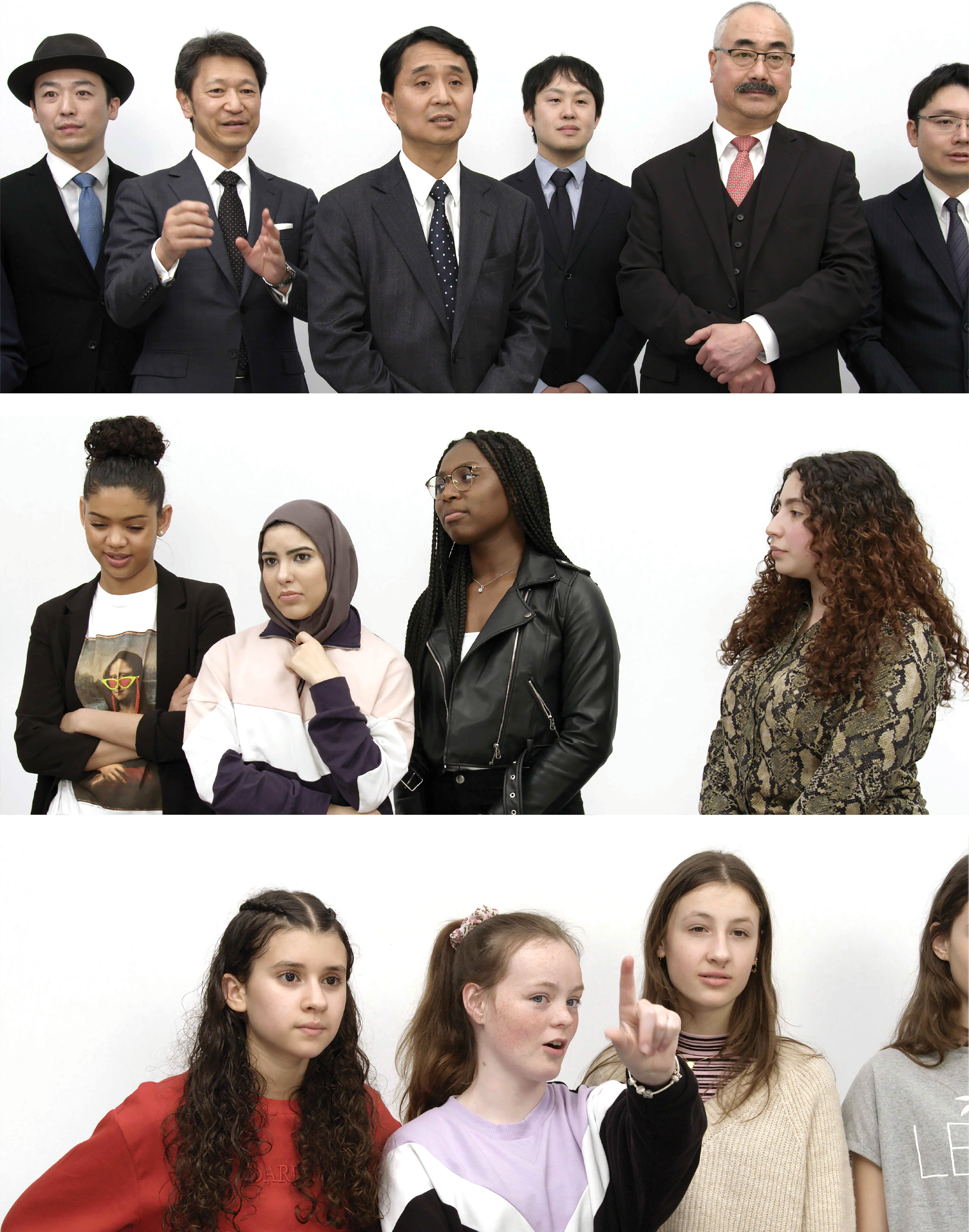
On View: March 1 - June 4, 2023
Night Watchingis a monumental, three-channel video installation, created by the renowned Dutch artist Rineke Dijkstra. Night Watching features 14 diverse audiences contemplating Rembrandt van Rijn's most iconic work, The Night Watch (1642). Each community engages in its own conversation, which range from close visual descriptions to speculations about the circumstances surrounding the creation of this masterpiece. Dijkstra's video is sequenced to explore the multiple ways in which viewers relate to a great painting and its subject.
Night Watching was commissioned by the Rijksmuseum where it debuted in 2019. On six consecutive evenings, Dijkstra filmed groups standing or sitting directly in front of The Night Watch. Her project took place after the museum was closed to the public, encouraging the most private, intimate encounters with the large painting. The Timken's presentation of Night Watching represents the first time that this complex project has been seen on the West Coast. Dijkstra's work inaugurates a new curatorial series at the Timken entitled “Reconsidering…”.
 Exchanging Words: Women and Letters in Seventeenth-Century Dutch Genre Painting
Exchanging Words: Women and Letters in Seventeenth-Century Dutch Genre Painting
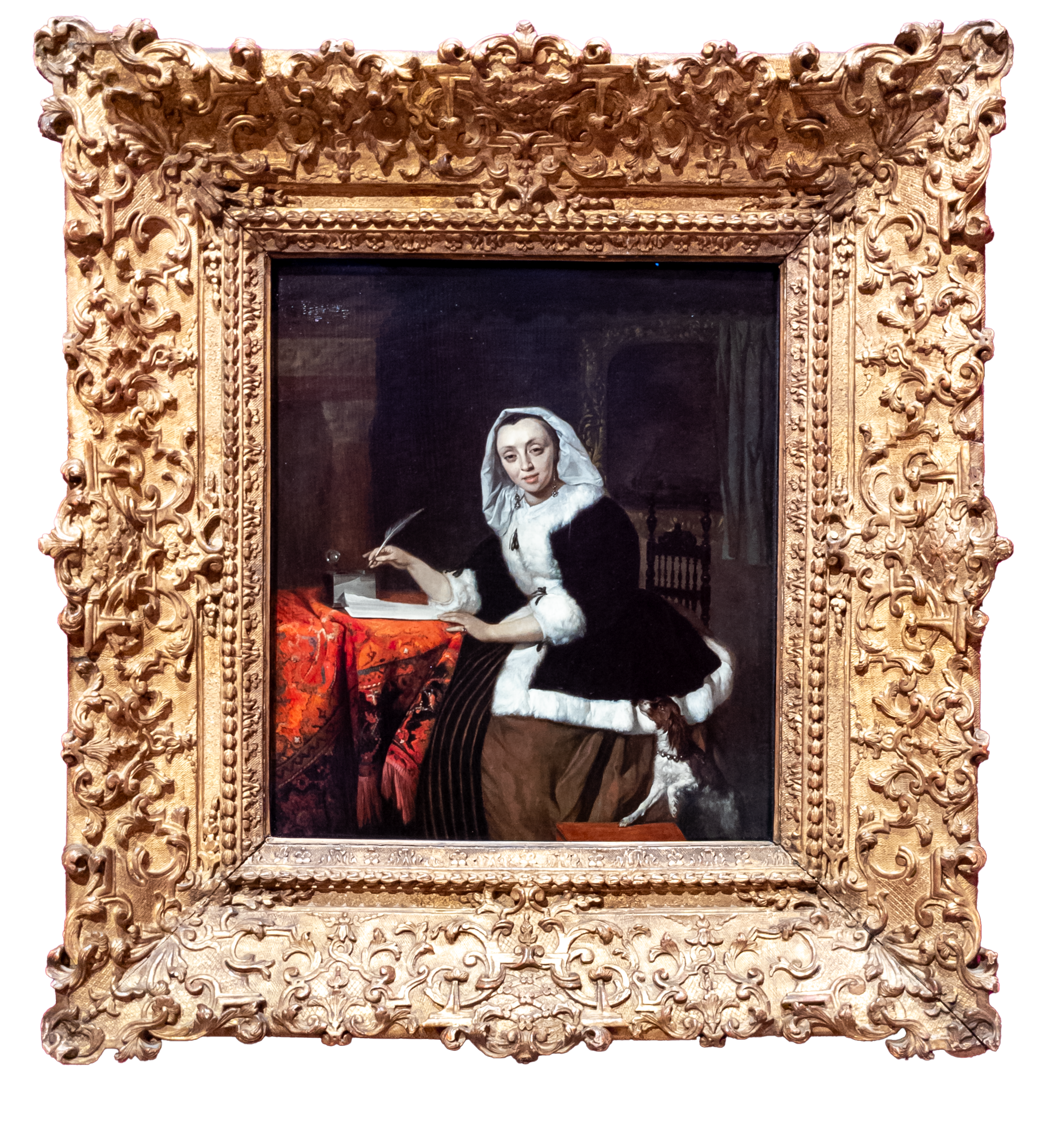
On View: September 21–December 31, 2022
Women and letters feature prominently in Dutch genre paintings from the second half of the seventeenth century. Captivating images show women reading, writing, and receiving letters, often in the company of books, and exchanging ideas with present or absent companions. Although the contents of these missives are rarely legible, they invite curiosity and contemplation, drawing the beholder into intimate, domestic spaces. Such scenes emphasize women’s engagement with the written word and demonstrate a remarkable interest in representing their intellectual lives. The popularity of epistolary themes in Dutch genre painting reflected a rise in the use of personal correspondence—particularly in the exchange of love letters—among the Dutch upper classes in this period, as well as advances in the postal system and the publication of letter-writing manuals. Rather than situating these scenes exclusively within the tradition of amorous correspondence, however, this exhibition explores how an exceptional group of eight genre paintings by Gabriel Metsu (1629–1667), Frans van Mieris (1635–1681), and Gerrit Dou (1613–1675) contributed to—and challenged—various societal ideas surrounding women’s education, literacy, and learning.
Drawn from the Timken Museum of Art and The Leiden Collection, among the most important collections of Dutch art in private hands, these works display a striking modernity in their representation of women, showing them as active participants in a wider cultural sphere. This exhibition is supported as part of the Dutch Culture USA program by the Consulate General of the Netherlands in New York.
 Destejidas (Unwoven) - Marianela de la Hoz
Destejidas (Unwoven) - Marianela de la Hoz
.jpg)
Special Preview: June 16, 2022
Summer Artist in Residency: June 17 - July 7, 2022
On View: July 13 - September 4, 2022
This will be the third in the Timken's popular summer series featuring local artists-in-residence. Following the success of Bhavna Mehta (2018) and Roman de Salvo (2019), we have invited Marianela de la Hoz to produce new work within the museum. De la Hoz is an admired painter whose work has been displayed in museums in Mexico and the United States. For the Timken, she proposes to complete a series of small-scaled works loosely based on the narrative of Penelope, a key character in Homeric myth, who uses weaving (and unweaving) as a clever strategy for delaying the pursuits of her suitors until her husband, Odysseus, returns from war.
✥ Download the Extended Labels from Destejidas (Unwoven)
✥ Read the full Press Release
 Spring Exhibition: Captivating Women From the Dijkstra Collection
Spring Exhibition: Captivating Women From the Dijkstra Collection
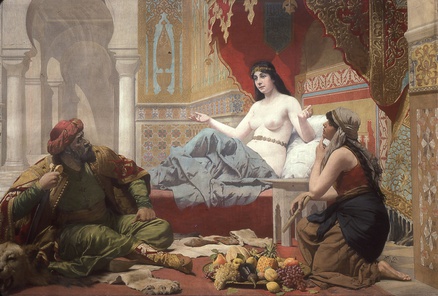
On view February 11 - May 10, 2020
This exhibition explores the variety of strategies used by artists in both Europe and the United States to depict women. Both mythological scenes and everyday life are depicted in these paintings all of which date from the late 19th- through the early 20th century. The collection of Sandra and Bram Dijkstra is known to connoisseurs for its quality and its strong focus on academic works from the fin de siècle. This project was conceived as part of a course taught at the University of San Diego by Timken’s Director of Curatorial Affairs, Derrick R. Cartwright, Ph.D., during the fall of 2019 and includes the input and interpretations of young scholars as they approach the enduring qualities of these complex, compelling representations. Click here to read about the exhibition in the words of Bram Dijkstra.
Click here for the online exhibition video!
Click here for PowerPoint!
News Release for Captivating Women click here!
 Fall Exhibition: Masterpieces of Italian Drawings from The British Museum
Fall Exhibition: Masterpieces of Italian Drawings from The British Museum
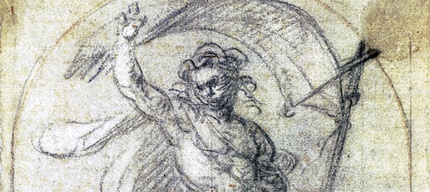
On View: September 6 - December 15, 2019
The Italian Renaissance and Baroque periods will come to life as the Timken Museum of Art in Balboa Park, San Diego presents Masterpieces of Italian Drawings from The British Museum, September 6 through December 15, 2019. The goal of the exhibition featuring the themes of birth, death, and resurrection is to share with the public some of the greatest drawings of these famed art historical periods, many of which are being seen for the first time in San Diego. The exhibition is an ambitious first-time-ever collaborative effort among the Timken, University of San Diego (USD) and The British Museum in London. Since the Timken and USD have worked together previously, the leadership of both institutions felt that their closeness and parallel missions—a commitment to European art of the highest quality—have made this a natural project on which to work together. The entire collection from The British Museum will include 54 drawings and prints, many of which will be on display at the Timken, featuring such 16th-century masters as Pamigianino, Andrea del Sarto and Agostino Carracci and the 18th-century artists Luca Giordano and Domenico Tiepolo. The balance of the drawings will be on display at the USD Galleries.
 Artist in Residence: Roman de Salvo's Electric Picnic
Artist in Residence: Roman de Salvo's Electric Picnic
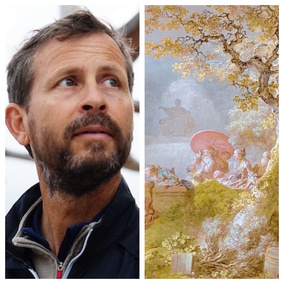
Residency: May 21- June 21, 2019
On view: July 28 - August 25, 2019
Roman de Salvo is a contemporary American sculptor whose work infuses the every day with surprising effect and intrigue. His art is characterized by the inventive use of ordinary materials and objects often involving energetic phenomena such as wind, water, fire, electricity, and audience participation. As part of the Timken Museum of Art’s summer artist-in-residence program, de Salvo will create the Electric Picnic sculpture based on the picturesque, Rococo-era, Blindman’s Buff (1775-80) by Jean Honoré Fragonard, which is part of the Museum’s permanent collection. De Salvo’s residency starts at the beginning of June, and the Electric Picnic sculpture will be on display at the Timken June 28 through August 25, 2019.
 Metonymies: A Dialogue with Twentieth-Century Works from the Sonnabend Collection
Metonymies: A Dialogue with Twentieth-Century Works from the Sonnabend Collection
On view February 8 – April 28, 2019
Ileana Sonnabend (1914-2007) was a gallerist and connoisseur of twentieth-century art. Through her legendary galleries in Paris and New York, Sonnabend helped establish the global reputations of many young artists: Andy Warhol, Jasper Johns, Robert Rauschenberg, Roy Lichtenstein, and Jeffrey Koons, to name only a few. Like the Timken’s founders, the Putnam sisters, Sonnabend brought a remarkably independent perspective to her personal collecting practice. Upon her death, she left an invaluable trove of modern masterworks to a foundation that bears her name, as well as to her family. Metonymies—from the Greek word for substitution—exchanges well-known works from the Timken’s permanent collection with unique objects from the Sonnabend Foundation Collection and Antonio Homen. This exhibition represents the first time that these works from the Sonnabend Collection are being shown publicly in San Diego.
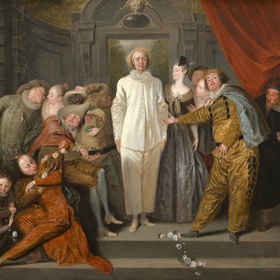
 Rococo Rivals and Revivals
Rococo Rivals and Revivals
On view September 21 - December 30, 2018
The Timken Museum of Art is proud to present its upcoming fall exhibition Rococo, Rivals and Revivals. Composed of 12 objects, paintings, drawings and prints, featuring regional, national and international loans, this exhibition will be presenting, for the first time in Southern California, a global vision on the different personalities and schools of Rococo. If this aesthetically pleasing genre has become one of the public’s favorite, it is almost impossible to reunite the main actors of this play under one roof, as if the rivalry between them had been passed throughout the centuries – not unlike the protagonists depicted in The Italian Comediansby Antoine Watteau, on loan from the National Gallery, Washington D.C. It is at the Timken that those masters will be presented and confronted to each other, where you will be able to contemplate and compare their similarities - and their differences. Watteau’s investigation of the commedia dell’artesubject matter represents a critical component to the exhibition’s overall narrative with his innovative combination of reality and artifice. The dialogue established between these masterpieces and those of Boucher and Fragonard, who are also represented at the Timken, surely will be interesting, as it is the first time this rare instance of the three most prominent Rococo painters will be exhibited together in San Diego.
Paired with contemporary representations by Yinka Shonibare, Chris Antemann and others, Rococo, Rivals and Revivalsis offering an unconventional spin on the typical subject matter of flirtation and seduction, common during the Rococo period, fantasized in a world where reality and artifice meet.
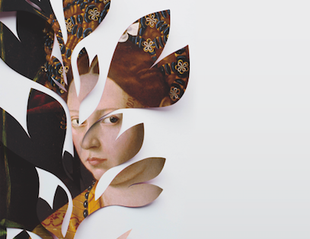
 Leela - Portrait Of A Woman In A Green Dress
Leela - Portrait Of A Woman In A Green Dress
June 5th to September 16, 2018
With the first days of summer approaching, the Timken becomes, once again, the theater of the/modernist installation, turning its galleries into a playground for a contemporary visual artist.
This year, the museum has a real treat: our artist is none other than Bhavna Mehta -named Emerging Artist for the San Diego Art Prize in 2014, who will be the Timken’s artist-in-residence during the month of June, providing visitors the unique opportunity to observe the intricate process of her artistic creation. While in the museum, Bhavna and her assistant will be finishing the last touches to Leela – Portrait of A Woman in a Green Dress, a 3-dimensional artwork on display this summer, echoing the Timken’s Portrait of a Lady by Bartolomeo Veneto.
Leela - Portrait Of A Woman in A Green Dress: the history.
It was back in December 2017 that the Timken’s Portrait of a Lady in a Green Dressfirst caught Bhavna’s eye. She was so intrigued by her sculptural presence, that Bhavna felt compelled to pay homage to her - “with absolutely no intent on copying”. As for the name of her lady, it came from Bhavna’s memories; growing up, she often heard the Sanskrit word Leela which means cosmic play. Leela also comes from the word leelo which means green in Bhavna's mother tongue Gujarati.
And for obvious reasons: unlike Bartolomeo’s Portrait of a Lady, - enclosed in the border of a heavy Venetian frame, stuck in a two-dimensional world with heavy clothing she seems trapped within - Bhavna’s paper Leela will be floating in the museum’s central rotunda. The light wind coming from the museum doors will caress her delicate paper dress, allowing her to dance in the air; her head, surrounded by buzzing paper dragonflies and butterflies infused with her ideas and dreams, embracing her as the center of her own universe.
Living just a few feet away (and right before her eyes), Leela offers a contrasting narrative to Veneto’s Portrait of a Lady. “It’s a powerful dialogue offered by those two women, similar, and yet so different.” says Bhavna. “I dream that behind the scenes, when the museum closes its doors, the two women meet halfway and get to know each other”. A dream Bhavna Mehta invites us all to share.
Artist-in-Residence: June 4 – June 24, 2018
Leela Exhibition on Display: June 29 – September 16, 2018
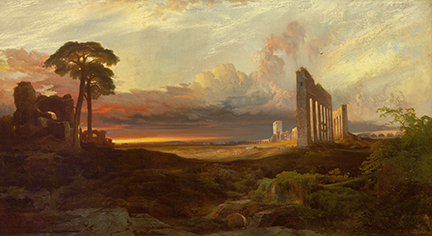
 The Romantic Impulse In the American Landscape Tradition
The Romantic Impulse In the American Landscape Tradition
On View January 26 to June 3, 2018
The Romantic Impulse in the American Landscape Tradition traces the unique responses of American painters and printmakers to changing ideas about landscape from the early 19th century to the present day. The exhibition centers on the Timken's own painting by Thomas Moran, Opus 24: Rome, from the Campagna, Sunset (1867), and considers how sublime space, ancient ruins and pastoral poetics were expressed by a surprisingly wide variety of artists: Albert Bierstadt, Arthur Wesley Dow, William Keith and others. Works from the Timken, USD's print collection, and various private lenders will be included.
The Romantic Impulse in the American Landscape Tradition: A Soundscape
Nuvi Mehta, Project Director, San Diego Symphony
Works in this exhibition elicit a sense of awe at the beauty and majesty of nature, as well as a sense of nostalgia for the distant past. In identifying music to accompany the paintings and prints, I turned to the Romantic-era composers, much as the artists shown here turned to earlier examples of European landscape painters for their inspiration.
The soundscape plays on a 30-minute loop.
Ottorino Respighi wrote Pines of Rome in 1924. This is the third movement - Pines on the Janiculum Hill. If you think you hear birds, you do. Respighi incorporated them into his original recording of Pines of Rome. Here, I took the liberty of extending their singing into other areas of the sound track.
- One of the last large scale Romantic masterworks was Richard Strauss’ An Alpine Symphony, written between 1911 and 1914. In music, Strauss depicts a hike in the Alps he had taken as a boy, including the moment when the party he was with became lost and then soaked during a thunderstorm.
- In 1879, having finally had some success, Antonin Dvorak, sent Johannes Brahms’ publisher a new suite. The incorporation of Czech folk music flavors this particular composition, and the work soon became known as the Czech Suite. Dvorak subtitled the first movement Pastorale. It is meant to invoke a pastoral setting.
- Années de pèlegrinage (Years of Pilgrimage) is a set of three suitesfor solo piano by Franz Liszt. After a period of extended travel abroad, Liszt was inspired by Italian poetry, and especially by Petrarch’s 123rd sonnet, which he set to music:
On earth reveal'd the beauties of the skies,
Angelic features, it was mine to hail;
Features, which wake my mingled joy and wail,
While all besides like dreams or shadows flies.
And fill'd with tears I saw those two bright eyes,
Which oft have turn'd the sun with envy pale;
And from those lips I heard—oh! such a tale,
As might awake brute Nature's sympathies!
Wit, pity, excellence, and grief, and love
With blended plaint so sweet a concert made,
As ne'er was given to mortal ear to prove:
And heaven itself such mute attention paid,
That not a breath disturb'd the listening grove—
Even æther's wildest gales the tuneful charm obey'd.
- Charles Tomlinson Griffes was born in Elmira, NY in 1884. He studied in Germany, and wrote in the German Romantic tradition before incorporating more impressionist techniques upon returning to the United States. The inspiration for The White Peacock—once described as the most beautiful piece of American music ever written-- came to Griffes as he watched a sunset while riding the train from Tarrytown to New York.
- Camille Saint- Saens finished his Symphony No. 3 (with Organ) in 1886. Saint-Saëns said "I gave everything to it I was able to give. What I have here accomplished, I will never achieve again.” We hear excerpts of the slow Maestoso or ‘majestic’ section
This exhibition is made possible by our generous supporters:
Collection of Sandy and Bram Dijkstra
Friends of the Timken
Collection of Angel and Fred Kleinbub
Museum of Contemporary Art San Diego
Rembrandt Society
San Diego City Commission for Arts and Culture
San Diego Symphony
Supervisor Ron Roberts, County of San Diego
Fine Art Collection, University of San Diego
Print Collection, University of San Diego
Image: Thomas Moran, Opus 24: Rome, from the Campagna, Sunset, 1867, oil on canvas, 63.5 x 114.6 cm (25 x 45 1/8 in.), Timken Museum of Art
